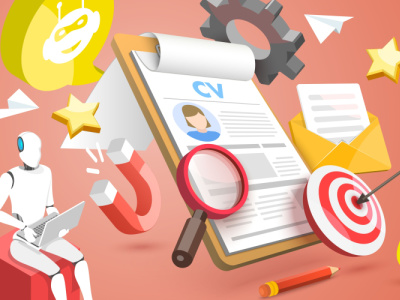As 2023 wound down, the use of artificial intelligence (AI) by employers showed no sign of slowing down. Rather, you should prepare for an increased use and presence of AI in employment decision-making, as well as employee engagement.
Intersection of Technology and Employment Law
Throughout 2023, an increasing number of states and cities began limiting the use of AI in employment decision-making, and the Equal Employment Opportunity Commission’s (EEOC) draft strategic enforcement plan (SEP) likewise outlined its intended approach to employers’ use of AI. As the year progressed, both states and the federal government continued to crack down on AI use in employment in cases that resulted in discrimination or discriminatory impact.
More specifically, multiple states proposed legislation in 2023 addressing individuals’ data privacy rights, with some including provisions addressing AI use in employment. In Washington, for example, the People’s Privacy Act sought to prohibit covered entities from, among other things, “the use of artificial intelligence-enabled profiling to make decisions that produce legal effects or similarly significant effects concerning individuals” (including employment opportunities). Although this specific legislation hasn’t passed through committee, it signals that states are increasingly primed to legislate the intersection of technology and employment law.
Eliminating Barriers
Similarly, the EEOC’s finalized SEP for 2024 to 2028 included six “subject matter priorities,” with the first being “eliminating barriers in recruitment and hiring.” Within this subject matter priority, the EEOC stated it will focus on “the use of technology, including artificial intelligence and machine learning, to target job advertisements, recruit applicants, or make or assist in hiring decisions where such systems intentionally exclude or adversely impact protected groups.”
The SEP likewise advises that the EEOC will focus on “the use of screening tools or requirements that disproportionately impact workers on a protected basis, including those facilitated by artificial intelligence or other automated systems, pre-employment tests, and background checks.”
EEOC Pursuing AI Discrimination Claims
The EEOC’s SEP wasn’t the end of its involvement in AI and employment decision-making in 2023. Rather, the agency made headlines when it settled its first case involving AI discrimination in the workplace.
As we wrote about previously, the EEOC asserted age and gender discrimination claims against three integrated companies providing English-language tutoring services to students in China under the name iTutorGroup (see “EEOC targeting discriminatory use of artificial intelligence” in the April 2023 newsletter).
According to the EEOC, the companies’ tutor application software automatically rejected female applicants and male applicants over the age of 60. The companies settled the lawsuit with the EEOC for $365,000, along with their agreement to adopt antidiscrimination policies, conduct training, and more.
Increased Employee Use of AI
Significantly, AI in employment isn’t used only by employers. You should expect employees to continue to use the technology moving forward. For example, national nonprofit organization Moms First partnered with other philanthropic entities and AI research/development companies (including OpenAI) to create PaidLeave.ai, a website that explains New York’s paid leave laws and helps those seeking such leave to obtain it.
According to its website, PaidLeave.ai was “designed to simplify [an individual’s] journey, providing clear answers and support every step of the way—from understanding [the individual’s] eligibility to navigating paperwork and planning [his/her] leave.”
Critically, the website intends to help provide documents and supporting resources individuals “can bring to [their] HR manager.” Although this resource is currently set to support only those seeking paid leave in New York, the potential for similar resources to arrive for other state leave laws—or even federal leave laws, such as the Family and Medical Leave Act (FMLA)—isn’t out of the question.
Tips for Employers in 2024
How should you prepare for AI’s role in 2024? Here are a few tips to keep in mind:
- If you are an employer that uses (or intends to use) AI in employment decision-making, ensure the processes comply with any applicable state law, as well as the guidance from the EEOC’s SEP. You should be aware that failure to follow the laws and EEOC guidance can lead to costly litigation, as exemplified by the iTutorGroup lawsuit.
- Prepare for more sophisticated requests for leave and accommodation, as well as potential complaints of discrimination, from employees using AI to draft such documentation/requests.
- Ensure policies/procedures address the use of AI by employees (e.g., the submission of the company’s or its customers’ confidential information to AI platforms).
- Consult with counsel regarding any questions related to the use of AI in the employment context, whether such use occurs from the employer or the employee.
Alyssa Lankford is an attorney in the Oklahoma City office of McAfee & Taft. She may be reached at alyssa.lankdford@mcafeetaft.com.

